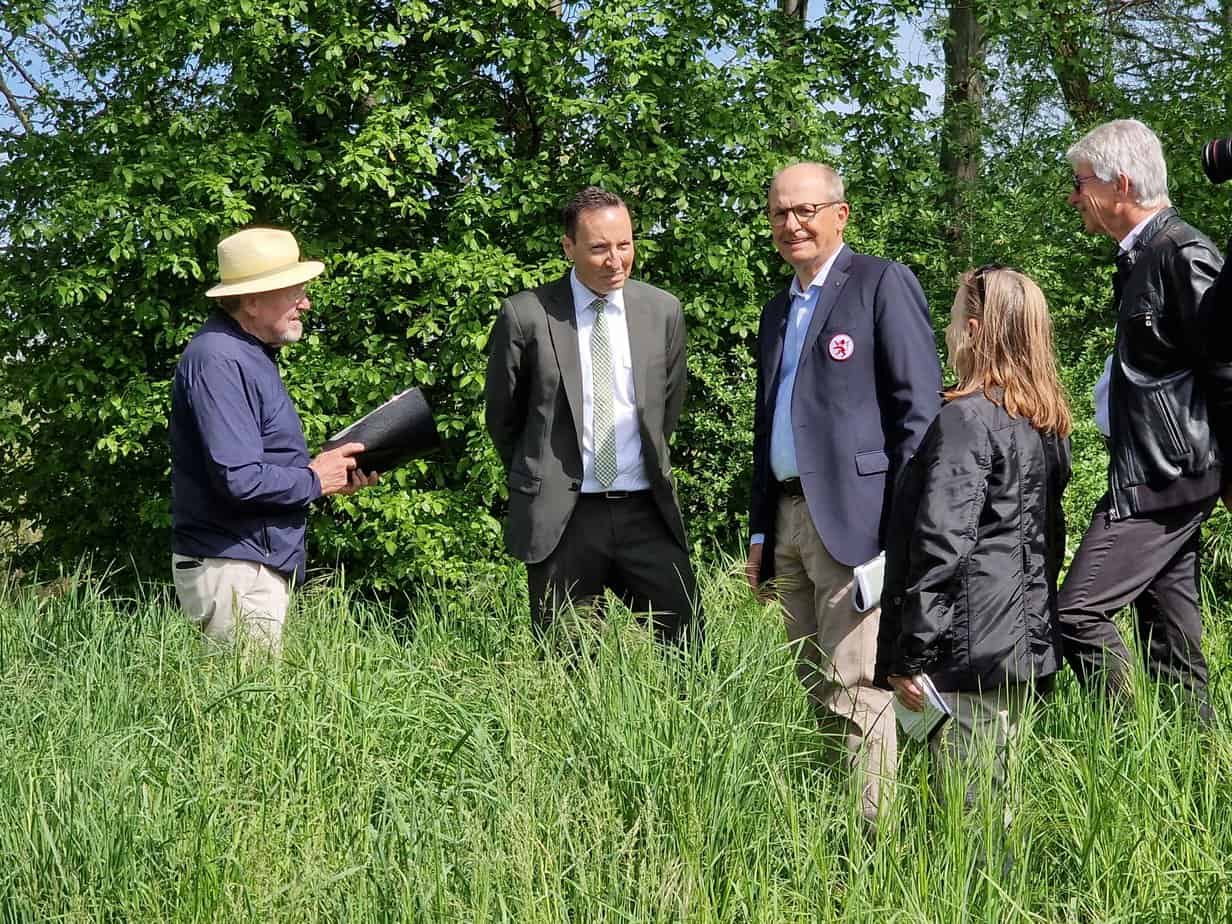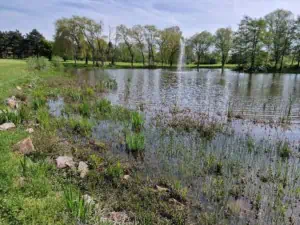Golf and politics: partners on the subject of biodiversity
When it comes to biodiversity, golf and politics come together in Germany. For the past three years, the number of cooperations between environmental ministries in individual German states and golf associations has been growing. And so it happens that these days the Hessian Secretary of State from the Ministry of the Environment, Oliver Conz, is standing in a patch of forest away from the fairways of the GC Main-Taunus in Wiesbaden, listening for bird calls. Conz, a passionate ornithologist, is a supporter of the Golf Course Habitat program run by the Hessian Golf Association and the German Golf Association together with the Hessian Ministry of the Environment. On that day, he will honor GC Main-Taunus for its achievements in promoting biodiversity. The Baden-Württemberg Golf Association and the Bavarian Golf Association also maintain projects with the respective environmental ministries, and the German Golf Association is not only involved in the Golf Course Habitat project, but also cooperates with the Federal Agency for Nature Conservation.
In some ways, the cooperation between politics and golf is still surprising for the German golf scene. Just 15 years ago, the two parties would hardly have found each other. Golf, with its once elitist image, was long regarded in politics as a sport that politicians did not like to admit to publicly. Especially not if you were not politically assigned to the conservative camp. At the same time, representatives of nature conservation associations or environmental parties were often eyed with suspicion in the golf scene as well.
But the situation has changed. “At facilities like the GC Main-Taunus here, you can see what a step forward we have made with golf,” explains Alexander Klose, Board Member for Legal & Services at the German Golf Association and member of the Executive Committee . Just ten years ago, the topic of sustainability had hardly received any attention in the German golf scene. The situation is now completely different: Issues of climate-appropriate planting, water management or extreme weather needed and received more and more attention.
State Secretary Conz belongs to the Green Party. He has recognized the qualities of golf courses: Topics such as biotope networking, large extensive areas, opportunities for biodiversity play a role here. In any case, Conz no longer has any contact problems when he discusses issues of CO₂ balancing, land compensation, pesticide bans or water management with Christofer Hattemer, president of the Hessian Golf Association.
At GC Main-Taunus, where they walk this Thursday past meadows, wetlands, bee hotels, they come across an 87-acre golf course near the city, built on the site of a former industrial gravel pit. “That, by the way, is the average size of a full-time farmer in Hesse,” Conz notes. In the field of agriculture, he said, efforts must also be made to increase biodiversity. Here at the golf course, with only 30 percent of the land used for real playing surface, a diversity of habitats has almost automatically emerged.
The challenge of proper communication remains. Golf courses in Germany are still struggling with the misconception among many officials or non-golfers that they only have green mowed areas. “It is now important that we also communicate these successes, both in the direction of the members, but also to the guests or in the direction of the neighborhood,” explains HGV President Hattemer then also with regard to the commitment of the golf courses. More than 50 percent of golf courses now participate in the project Habitat Golf Course, and the trend is rising.
For Conz, the politician, who himself points out the kingfisher on his walk around the golf course and the chirping of the blackcap, the commitment is worthwhile: “I’m sure it pays off for the sport when the population notices how much you do for nature conservation.”








